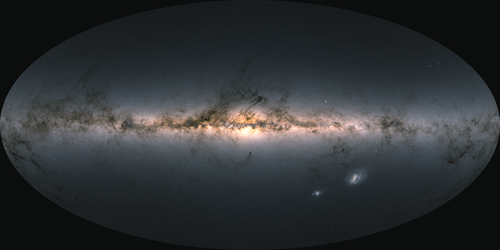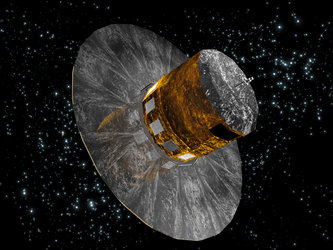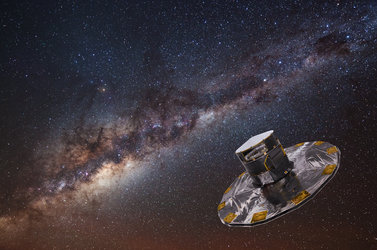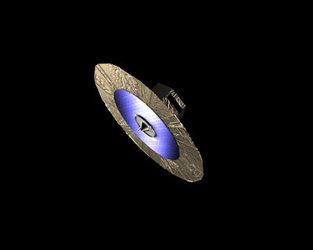Gaia spreads its wings
ESA’s Gaia star-mapper has passed a critical test ahead of its launch in 2013: the spacecraft’s sunshield has been deployed for the first time.
Gaia's sunshield is an essential component of the mission. It keeps Gaia in shadow, maintaining the scientific instruments at a constant temperature of around –110°C.
The sunshield is about 10 m across, which is too large for the launch vehicle fairing, so it has been built with a dozen folding panels that will be deployed after launch.
Since the sunshield is designed for the weightlessness of space, it cannot support its own weight on Earth. So, during this test at Astrium in Toulouse, France, support cables and counterweights simulated weightless conditions and provided a realistic trial.
The support system can be seen in the video as the white framework that surrounds Gaia.
The video is an edited, time-lapse sequence of the deployment. In real time, it takes about 20 minutes. As the sunshield opens, the main spacecraft comes into view.
During its expected lifetime of five years, Gaia will take a census of a billion stars – roughly 1% of all of the stars in our Galaxy. It will observe each star about 70 times, each time recording its brightness, colour and, most importantly, its position.
By comparing Gaia's series of exquisite observations, astronomers will precisely measure the apparent movement of each star across the heavens, enabling them to determine its distance and true motion through space.
The unprecedented results will allow astronomers to trace the history of the Milky Way.
Before the 2013 launch, some of the solar array panels needed to generate power will be fixed to the sunshield. The rest will be placed on the bottom of the spacecraft.
The Gaia sunshield was developed and manufactured by Sener in Spain. The satellite’s prime contractor is Astrium SAS in France.















 Germany
Germany
 Austria
Austria
 Belgium
Belgium
 Denmark
Denmark
 Spain
Spain
 Estonia
Estonia
 Finland
Finland
 France
France
 Greece
Greece
 Hungary
Hungary
 Ireland
Ireland
 Italy
Italy
 Luxembourg
Luxembourg
 Norway
Norway
 The Netherlands
The Netherlands
 Poland
Poland
 Portugal
Portugal
 Czechia
Czechia
 Romania
Romania
 United Kingdom
United Kingdom
 Slovenia
Slovenia
 Sweden
Sweden
 Switzerland
Switzerland
































